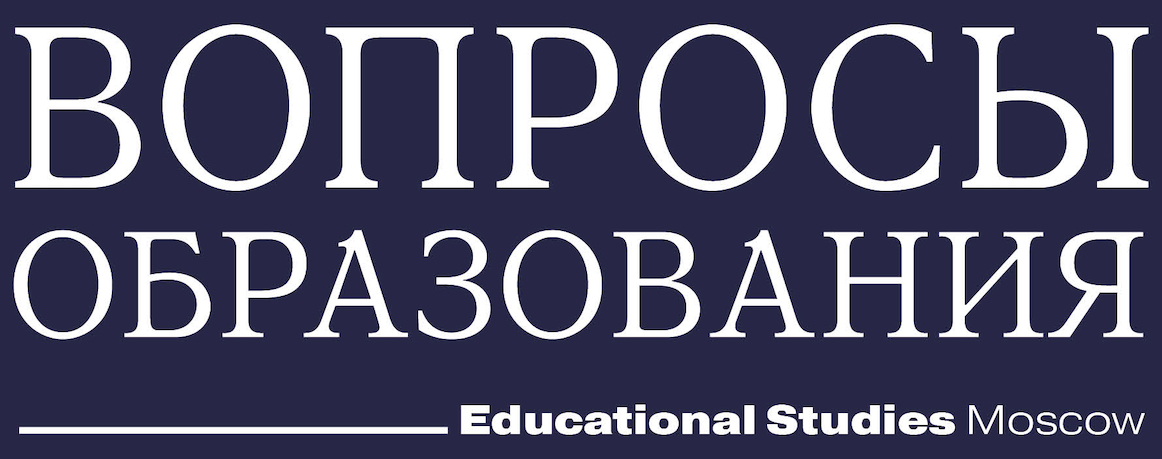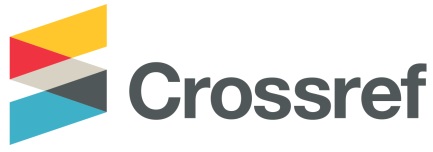Academic Track Choices, Educational Achievements and Social Inequality in India
Аннотация
Expansion of educational opportunities has the potential to overcome social and economic inequalities. Educational achievements might be used as a social policy tool to reduce socio-economic inequalities by improving labor market outcomes. However, the benefits derived depend on academic choices an individual makes and the social group he or she belongs to. Children from marginalized social groups choose different academic tracks than those from privileged ones, which accounts for further differences in labor market outcomes. The present study examines whether social background defines educational achievements in India. The findings reveal that students with marginalized background have significantly lower test scores at all three tested educational levels (high school, bachelor and MBA). Social background remains the strongest predictor for educational achievements even after controlling for academic track choices and previous performance of the students. Using the social transformation theory, the study further concludes that differences in achievement scores by socio-economic background could be reduced by aspirational marginalized students; however, those cannot be erased completely.
Скачивания
Литература
Alcott B., Rose P. (2017) Learning in India’s Primary Schools: How Do Disparities Widen across the Grades? International Journal of Educational Development, vol. 56, September, pp. 42–51. http://dx.doi.org/10.1016/j.ijedudev.2017.05.002
Arcidiacono P. (2004) Ability Sorting and the Returns to College Major. Journal of Econometrics, vol. 121, no 1, pp. 343–375. https://doi.org/https://doi.org/10.1016/j.jeconom.2003.10.010
Atkinson A.B. (2015) Inequality. What Can Be Done? Cambridge, MA: Harvard University.
Autor D., Figlio D., Karbownik K., Roth J., Wasserman M. (2016) School Quality and the Gender Gap in Educational Achievement. American Economic Review, vol. 106, no 5, pp. 289–295. http://dx.doi.org/10.1257/aer.p20161074
Banerjee A., Cole S., Duflo E., Linden L. (2007) Remedying Education: Evidence from Two Randomized Experiments in India. The Quarterly Journal of Economics, vol. 122, no 3, pp. 1235–1264. https://doi.org/10.1162/qjec.122.3.1235
Barakat B., Shields R. (2019) Just Another Level? Comparing Quantitative Patterns of Global Expansion of School and Higher Education Attainment. Demography, vol. 56, no 3, pp. 917–934. https://doi.org/10.1007/s13524-019-00775-5
Baruch Y., Peiperl M. (2000) The Impact of an MBA on Graduate Careers. Human Resource Management Journal, vol. 10, no 2, pp. 69–90. https://doi.org/https://doi.org/10.1111/j.1748-8583.2000.tb00021.x
Becker G.S. (2009) Human Capital: A Theoretical and Empirical Analysis, with Special Reference to Education. Chicago, IL: University of Chicago.
Becker R., Hecken A. (2008) Why Are Working-Class Children Diverted from Universities?—An Empirical Assessment of the Diversion Thesis. European Sociological Review, vol. 25, no 2, pp. 233–250. https://doi.org/10.1093/esr/jcn039
Becker R., Mayer K.U. (2019) Societal Change and Educational Trajectories of Women and Men Born between 1919 and 1986 in (West) Germany. European Sociological Review, vol. 35, no 2, pp. 147–168. https://doi.org/10.1093/esr/jcy052
Behrman J.R., Birdsall N. (1983) The Quality of Schooling: Quantity alone Is Misleading. The American Economic Review, vol. 73, no 5, pp. 928–946.
Bertschy K., Cattaneo M.A., Wolter S.C. (2009) PISA and the Transition into the Labour Market. Labour, vol. 23, s1, pp. 111–137. https://doi.org/10.1111/j.1467-9914.2008.00432.x
Bhatnagar T., Sinha V. (2018) Learning Styles: A Comparison between Indian and German Business Students. Journal of International Students, vol. 8, no 1, pp. 473–487. http://dx.doi.org/10.5281/zenodo.1134345
Bhattacharji P., Kingdon G.G. (2015) School Education and the Lack of Parent Information. Contemporary Education Dialogue, vol. 13, no 1, pp. 57–92. https://doi.org/10.1177/0973184915603174
Birkelund J.F. (2020) Aiming High and Missing the Mark? Educational Choice, Dropout Risk, and Achievement in Upper Secondary Education among Children of Immigrants in Denmark. European Sociological Review, vol. 36, no 3, pp. 395–412. https://doi.org/10.1093/esr/jcz064
Black D.A., Smith J.A. (2004) How Robust Is the Evidence on the Effects of College Quality? Evidence from Matching. Journal of Econometrics, vol. 121, no 1, pp. 99–124. https://doi.org/https://doi.org/10.1016/j.jeconom.2003.10.006
Black S.E., Cortes K.E., Lincove J.A. (2020) Apply Yourself: Racial and Ethnic Differences in College Application. Education Finance and Policy, vol. 15, no 2, pp. 209–240. https://doi.org/10.1162/edfp_a_00273
Blossfeld P.N., Blossfeld G.J., Blossfeld H.-P. (2015) Educational Expansion and Inequalities in Educational Opportunity: Long-Term Changes for East and West Germany. European Sociological Review, vol. 31, no 2, pp. 144–160. https://doi.org/10.1093/esr/jcv017
Boissiere M., Knight J.B., Sabot R.H. (1985) Earnings, Schooling, Ability, and Cognitive Skills. The American Economic Review, vol. 75, no 5, pp. 1016–1030. http://www.jstor.org/stable/1818642
Bordón P., Braga B. (2020) Employer Learning, Statistical Discrimination and University Prestige. Economics of Education Review, vol. 77, August, Article no 101995. https://doi.org/https://doi.org/10.1016/j.econedurev.2020.101995
Borooah V. (2012) Social Identity and Educational Attainment: The Role of Caste and Religion in Explaining Differences between Children in India. Journal of Development Studies, vol. 48, no 7, pp. 887–903. http://dx.doi.org/10.1080/00220388.2011.621945
Brand J.E., Halaby C.N. (2006) Regression and Matching Estimates of the Effects of Elite College Attendance on Educational and Career Achievement. Social Science Research, vol. 35, no 3, pp. 749–770. https://doi.org/https://doi.org/10.1016/j.ssresearch.2005.06.006
Breen R. (2010) Educational Expansion and Social Mobility in the 20th Century. Social Forces, vol. 89, no 2, pp. 365–388. https://doi.org/10.1353/sof.2010.0076
Breen R., Goldthorpe J.H. (1997) Explaining Educational Differentials: Towards a Formal Rational Action Theory. Rationality and Society, vol. 9, no 3, pp. 275–305.
Breen R., Luijkx R., Müller W., Pollak R. (2009) Nonpersistent Inequality in Educational Attainment: Evidence from Eight European Countries. American Journal of Sociology, vol. 114, no 5, pp. 1475–1521. https://doi.org/10.1086/595951
Burns S.T., Garcia G. (2017) Education Level, Occupational Classification, and Perceptions of Differences for Blacks in the United States. Journal of Employment Counseling, vol. 54, no 2, pp. 51–62. https://doi.org/10.1002/joec.12053
Card D., Krueger A.B. (1992) Does School Quality Matter? Returns to Education and the Characteristics of Public Schools in the United States. Journal of Political Economy, vol. 100, no 1, pp. 1–40. http://dx.doi.org/10.1086/261805
Carruthers C.K., Wanamaker M.H. (2013) Closing the Gap? The Effect of Private Philanthropy on the Provision of African-American Schooling in the U.S. South. Journal of Public Economics, vol. 101, May, pp. 53–67. https://doi.org/https://doi.org/10.1016/j.jpubeco.2013.02.003
Chadha N., Nandwani B. (2018) Ethnic Fragmentation, Public Good Provision and Inequality in India, 1988–2012. Oxford Development Studies, vol. 46, no 3, pp. 363–377. http://dx.doi.org/10.1080/13600818.2018.1434498
Coenen J., Cornelisz I., Groot W., Maassen van den Brink H., van Klaveren C. (2018) Teacher Characteristics and Their Effects on Student Test Scores: A Systematic Review. Journal of Economic Surveys, vol. 32, no 3, pp. 848–877. http://dx.doi.org/10.1111/joes.12210
Dasgupta A. (2009) On the Margins: Muslims in West Bengal. Economic and Political Weekly, vol. 44, no 16, pp. 91–96. http://www.jstor.org/stable/40279161
Davies R., Heinesen E., Holm A. (2002) The Relative Risk Aversion Hypothesis of Educational Choice. Journal of Population Economics, vol. 15, no 4, pp. 683–713. https://doi.org/10.1007/s001480100087
De Alwis S., Parr N., Guo F. (2020) The Education–Occupation (Mis)Match of Asia-Born Immigrants in Australia. Population Research and Policy Review, vol. 39, no 3, pp. 519–548. https://doi.org/10.1007/s11113-019-09548-9
Dee T.S. (2005) The Effects of Catholic Schooling on Civic Participation. International Tax and Public Finance, vol. 12, no 5, pp. 605–625. https://doi.org/10.1007/s10797-005-0477-9
DeJaeghere J.G. (2020) Reconceptualizing Educational Capabilities: A Relational Capability Theory for Redressing Inequalities. Journal of Human Development and Capabilities, vol. 21, no 1, pp. 17–35. https://doi.org/10.1080/19452829.2019.1677576
Desai S., Kulkarni V. (2008) Changing Educational Inequalities in India in the Context of Affirmative Action. Demography, vol. 45, no 2, pp. 245–270. http://dx.doi.org/10.1353/dem.0.0001
Deshpande A. (2011) The Grammar of Caste: Economic Discrimination in Contemporary India. New Delhi: Oxford University.
Dhar S. (2012) Employability of Management Students in India: Some Concerns and Considerations. AIMA Journal for Management Research, vol. 6, no 4/4, pp. 497–974.
Dirks N.B. (2011) Castes of Mind: Colonialism and the Making of Modern India. Princeton, NJ: Princeton University.
Dollmann J., Jonsson J.O., Mood C., Rudolphi F. (2023) Is ‘Immigrant Optimism’in Educational Choice a Problem? Ethnic Gaps in Swedish upper Secondary School Completion. European Sociological Review, vol. 39, no 3, pp. 384–399. http://dx.doi.org/10.1093/esr/jcad023
Dollmann J., Weißmann M. (2020) The Story after Immigrants’ Ambitious Educational Choices: Real Improvement or Back to Square One? European Sociological Review, vol. 36, no 1, pp. 32–47. https://doi.org/10.1093/esr/jcz042
Evans W.N., Schwab R.M. (1995) Finishing High School and Starting College: Do Catholic Schools Make a Difference? The Quarterly Journal of Economics, vol. 110, no 4, pp. 941–974. https://doi.org/10.2307/2946645
Fazal T. (2017) Scheduled Castes, Reservations and Religion: Revisiting a Juridical Debate. Contributions to Indian Sociology, vol. 51, no 1, pp. 1–24. https://doi.org/10.1177/0069966716680429
Foladare I.S. (1969) A Clarification of “Ascribed Status” and “Achieved Status.” The Sociological Quarterly, vol. 10, no 1, pp. 53–61. https://doi.org/10.1111/j.1533-8525.1969.tb02061.x
Forrester P. (1986) The British MBA: An Assessment of Postgraduate Management Education in UK Universities. Cranfield: Cranfield Press.
Fouad N.A., Kantamneni N., Smothers M.K., Chen Y.-L., Fitzpatrick M., Terry S. (2008) Asian American Career Development: A Qualitative Analysis. Journal of Vocational Behavior, vol. 72, no 1, pp. 43–59. https://doi.org/https://doi.org/10.1016/j.jvb.2007.10.002
Fouad N.A., Kim S., Ghosh A., Chang W., Figueiredo C. (2015) Family Influence on Career Decision Making: Validation in India and the United States. Journal of Career Assessment, vol. 24, no 1, pp. 197–212. http://dx.doi.org/10.1177/1069072714565782
Frisancho V., Krishna K. (2016) Affirmative Action in Higher Education in India: Targeting, Catch Up, and Mismatch. Higher Education, vol. 71, no 5, pp. 611–649. http://dx.doi.org/10.1007/s10734-015-9927-1
Gaur D., Pandey S.K., Sharma D. (2024) Inequalities in Educational Achievement: Effect of Individuals’ Capabilities & Social Identity. Journal of Policy Modeling, vol. 46, no 3, pp. 494–513. https://doi.org/10.1016/j.jpolmod.2024.02.001
Glewwe P. (1999) Why Does Mother’s Schooling Raise Child Health in Developing Countries? Evidence from Morocco. The Journal of Human Resources, vol. 34, no 1, pp. 124–159. https://doi.org/10.2307/146305
Gregorio J. de, Lee J. (2002) Education and Income Inequality: New Evidence From Cross-Country Data. Review of Income and Wealth, vol. 48, no 3, pp. 395–416. https://doi.org/https://doi.org/10.1111/1475-4991.00060
Hall A.R., Nishina A., Lewis J.A. (2017) Discrimination, Friendship Diversity, and STEM-Related Outcomes for Incoming Ethnic Minority College Students. Journal of Vocational Behavior, vol. 103, hfrt B, December, pp. 76–87. https://doi.org/https://doi.org/10.1016/j.jvb.2017.08.010
Hango D., Zarifa D., Pizarro Milian R., Seward B. (2021) Roots and STEMS? Examining Field of Study Choices among Northern and Rural Youth in Canada. Studies in Higher Education, vol. 46, no 3, pp. 563–593. https://doi.org/10.1080/03075079.2019.1643308
Hannum E., Buchmann C. (2005) Global Educational Expansion and Socio-Economic Development: An Assessment of Findings from the Social Sciences. World Development, vol. 33, no 3, pp. 333–354. https://doi.org/https://doi.org/10.1016/j.worlddev.2004.10.001
Härkönen J., Sirniö O. (2020) Educational Transitions and Educational Inequality: A Multiple Pathways Sequential Logit Model Analysis of Finnish Birth Cohorts 1960–1985. European Sociological Review, vol. 36, no 5, pp. 700–719. https://doi.org/10.1093/esr/jcaa019
Heckman J.J. (2011) The Economics of Inequality: The Value of Early Childhood Education. American Educator, vol. 35, no 1, pp. 31–35.
Hutcheson G. (1999) Ordinary Least-Squares Regression. The Multivariate Social Scientist (ed. G. Hutcheson), London, Thousand Oaks, CA: SAGE, pp. 56–113. https://doi.org/10.4135/9780857028075.d49
Jagnani M., Khanna G. (2020) The Effects of Elite Public Colleges on Primary and Secondary Schooling Markets in India. Journal of Development Economics, vol. 146, September, Article no 102512. https://doi.org/https://doi.org/10.1016/j.jdeveco.2020.102512
Jain C., Prasad N. (2018) Quality of Secondary Education in India. Concepts, Indicators, and Measurement. Singapore: Springer.
Jeffrey C., Jeffery R., Jeffery P. (2004) Degrees without Freedom: The Impact of Formal Education on Dalit Young Men in North India. Development and Change, vol. 35, no 5, pp. 963–986. http://dx.doi.org/10.1111/j.1467-7660.2004.00388.x
Jürges H., Reinhold S., Salm M. (2011) Does Schooling Affect Health Behavior? Evidence from the Educational Expansion in Western Germany. Economics of Education Review, vol. 30, no 5, pp. 862–872. https://doi.org/https://doi.org/10.1016/j.econedurev.2011.04.002
Karabchuk T., Soboleva N. (2020) Temporary Employment, Informal Work and Subjective Well-Being across Europe: Does Labor Legislation Matter? Journal of Happiness Studies, vol. 21, no 5, pp. 1879–1901. https://doi.org/10.1007/s10902-019-00152-4
Kaufman P. (2003) Learning to Not Labor: How Working-Class Individuals Construct Middle-Class Identities. The Sociological Quarterly, vol. 44, no 3, pp. 481–504.
https://doi.org/10.1111/j.1533-8525.2003.tb00542.x
Lambert L., Karabchuk T., Joshanloo M. (2022) Predictors of Life Satisfaction in the United Arab Emirates: Results Based on Gallup Data. Current Psychology, vol. 41, July, pp. 3827–3841. https://doi.org/10.1007/s12144-020-00873-3
Lin C.-Y., Lin C.-H.A. (2012) Does Higher Education Expansion Reduce Credentialism and Gender Discrimination in Education? Social Indicators Research, vol. 109, no 2, pp. 279–293. https://doi.org/10.1007/s11205-011-9902-x
Lin D., Lutter R., Ruhm C.J. (2018) Cognitive Performance and Labour Market Outcomes. Labour Economics, vol. 51, April, pp. 121–135. https://doi.org/https://doi.org/10.1016/j.labeco.2017.12.008
Lin N. (2000) Inequality in Social Capital. Contemporary Sociology, vol. 29, no 6, pp. 785–795. https://doi.org/10.2307/2654086
Linton R. (1936) The Study of Man: An Introduction. New York, NY: Appleton-Century.
Lopes A.D. (2017) Affirmative Action in Brazil: How Students’ Field of Study Choice Reproduces Social Inequalities. Studies in Higher Education, vol. 42, no 12, pp. 2343–2359. https://doi.org/10.1080/03075079.2016.1144180
Loveless M., Whitefield S. (2011) Being Unequal and Seeing Inequality: Explaining the Political Significance of Social Inequality in New Market Democracies. European Journal of Political Research, vol. 50, no 2, pp. 239–266. https://doi.org/https://doi.org/10.1111/j.1475-6765.2010.01929.x
Meade R.D., Singh L. (1973) Motives for Child-Bearing in America and in India. Journal of Cross-Cultural Psychology, vol. 4, no 1, pp. 89–110.
Metz A.J., Fouad N., Ihle-Helledy K. (2008) Career Aspirations and Expectations of College Students: Demographic and Labor Market Comparisons. Journal of Career Assessment, vol. 17, no 2, pp. 155–171. https://doi.org/10.1177/1069072708328862
Neault R.A., Mondair S. (2011) Supporting Workplace Diversity: Emerging Roles for Employment Counselors. Journal of Employment Counseling, vol. 48, no 2, pp. 72–80. https://doi.org/10.1002/j.2161-1920.2011.tb00116.x
Neidhöfer G., Serrano J., Gasparini L. (2018) Educational Inequality and Intergenerational Mobility in Latin America: A New Database. Journal of Development Economics, vol. 134(C), pp. 329–349. http://10.0.3.248/j.jdeveco.2018.05.016
Prescod D.J., Daire A.P., Young C., Dagley M., Georgiopoulos M. (2018) Exploring Negative Career Thoughts between STEM-Declared and STEM-Interested Students. Journal of Employment Counseling, vol. 55, no 4, pp. 166–175. https://doi.org/10.1002/joec.12096
Qazi W., Raza S.A., Jawaid S.T., Karim M.Z.A. (2018) Does Expanding Higher Education Reduce Income Inequality in Emerging Economy? Evidence from Pakistan. Studies in Higher Education, vol. 43, no 2, pp. 338–358. https://doi.org/10.1080/03075079.2016.1172305
Reimer D., Noelke C., Kucel A. (2008) Labor Market Effects of Field of Study in Comparative Perspective: An Analysis of 22 European Countries. International Journal of Comparative Sociology, vol. 49, no 4–5, pp. 233–256. https://doi.org/10.1177/0020715208093076
Reimer D., Pollak R. (2009) Educational Expansion and Its Consequences for Vertical and Horizontal Inequalities in Access to Higher Education in West Germany. European Sociological Review, vol. 26, no 4, pp. 415–430. https://doi.org/10.1093/esr/jcp029
Salikutluk Z. (2016) Why Do Immigrant Students Aim High? Explaining the Aspiration–Achievement Paradox of Immigrants in Germany. European Sociological Review, vol. 32, no 5, pp. 581–592. https://doi.org/10.1093/esr/jcw004
Schindler S., Reimer D. (2011) Differentiation and Social Selectivity in German Higher Education. Higher Education, vol. 61, no 3, pp. 261–275. http://dx.doi.org/10.1007/s10734-010-9376-9
Schultz T.W. (1961) Investment in Human Capital. The American Economic Review, vol. 51, no 1, pp. 1–17.
Shavit Y. (2007) Stratification in Higher Education: A Comparative Study. Stanford, CA: Stanford University.
Shavit Y., Blossfeld H.-P. (1993) Persistent Inequality: Changing Educational Attainment in Thirteen Countries. Boulder, CO: Westview Press.
Sianou‐Kyrgiou E., Tsiplakides I. (2011) Similar Performance, but Different Choices: Social Class and Higher Education Choice in Greece. Studies in Higher Education, vol. 36, no 1, pp. 89–102. https://doi.org/10.1080/03075070903469606
Smith J. (2017) The Sequential College Application Process. Education Finance and Policy, vol. 13, no 4, pp. 545–575. https://doi.org/10.1162/edfp_a_00235
Stier H., Herzberg-Druker E. (2017) Running Ahead or Running in Place? Educational Expansion and Gender Inequality in the Labor Market. Social Indicators Research, vol. 130, no 3, pp. 1187–1206. https://doi.org/10.1007/s11205-015-1210-4
Stiglitz J.E. (2012) The Price of Inequality: How Today’s Divided Society Endangers Our Future. New York, London: W.W. Norton & Company.
Stocké V. (2007) Explaining Educational Decision and Effects of Families’ Social Class Position: An Empirical Test of the Breen–Goldthorpe Model of Educational Attainment. European Sociological Review, vol. 23, no 4, pp. 505–519. http://dx.doi.org/10.1093/esr/jcm014
Tan P.L., Morgan S.P., Zagheni E. (2016). A Case for “Reverse One-Child” Policies in Japan and South Korea? Examining the Link between Education Costs and Lowest-Low Fertility. Population Research and Policy Review, vol. 35, no 3, pp. 327–350. https://link.springer.com/article/10.1007/s11113-016-9390-4
Thiele T., Singleton A., Pope D., Stanistreet D. (2016) Predicting Students’ Academic Performance Based on School and Socio-Demographic Characteristics. Studies in Higher Education, vol. 41, no 8, pp. 1424–1446. https://doi.org/10.1080/03075079.2014.974528
Thorbecke E., Charumilind C. (2002) Economic Inequality and Its Socioeconomic Impact. World Development, vol. 30, no 9, pp. 1477–1495. http://dx.doi.org/10.1016/S0305-750X(02)00052-9
Tjaden J.D., Hunkler C. (2017) The Optimism Trap: Migrants’ Educational Choices in Stratified Education Systems. Social Science Research, vol. 67, September, pp. 213–228. https://doi.org/https://doi.org/10.1016/j.ssresearch.2017.04.004
Triventi M. (2011) Stratification in Higher Education and Its Relationship with Social Inequality: A Comparative Study of 11 European Countries. European Sociological Review, vol. 29, no 3, pp. 489–502. https://doi.org/10.1093/esr/jcr092
Trow M. (1973) Problems in the Transition from Elite to Mass Higher Education. Berkeley, CA: Carnegie Commission on Higher Education.
Valente C. (2019) Primary Education Expansion and Quality of Schooling. Economics of Education Review, vol. 73, December, Article no 101913. https://doi.org/https://doi.org/10.1016/j.econedurev.2019.101913
Walters P.B. (2000) The Limits of Growth: School Expansion and School Reform in Historical Perspective. Handbook of the Sociology of Education (ed. M.T. Hallinan), Boston, MA: Springer, pp. 241–261. https://doi.org/10.1007/0-387-36424-2_11
Yehuda B., Uday B.A., Bijaya M. (2019) Career Dynamics in India: A Two-Wave Study of Career Orientations and Employability of Graduates. Personnel Review, vol. 49, no 3, pp. 825–845. https://doi.org/10.1108/PR-10-2018-0429
Yeravdekar S., Behl A. (2017) Benchmarking Model for Management Education in India: A Total Interpretive Structural Modeling Approach. Benchmarking: An International Journal, vol. 24, no 3, pp. 666–693. https://doi.org/10.1108/BIJ-06-2016-0082
Yirmiyahu A., Rubin O.D., Malul M. (2017) Does Greater Accessibility to Higher Education Reduce Wage Inequality? The Case of the Arab Minority in Israel. Studies in Higher Education, vol. 42, no 6, pp. 1071–1090. https://doi.org/10.1080/03075079.2015.1076781
Zax J.S., Rees D.I. (2002) IQ, Academic Performance, Environment, and Earnings. The Review of Economics and Statistics, vol. 84, no 4, 600–616. https://doi.org/10.1162/003465302760556440








